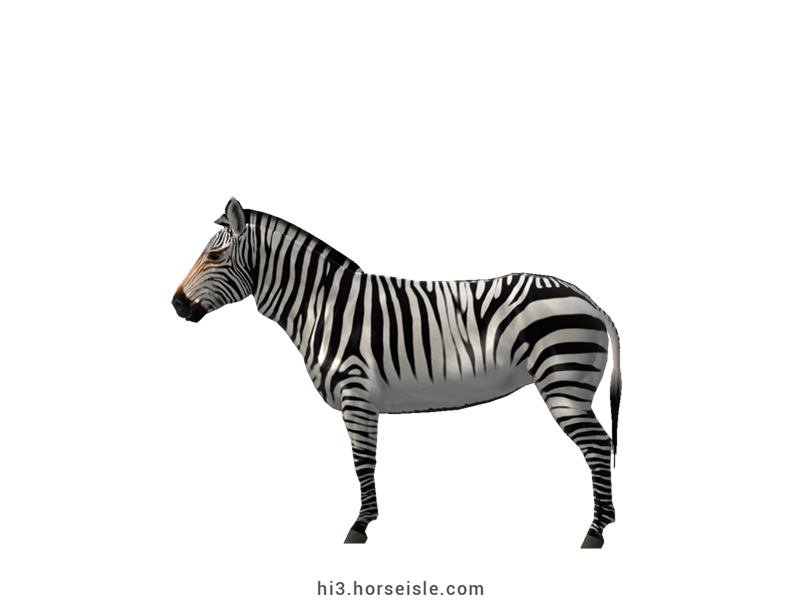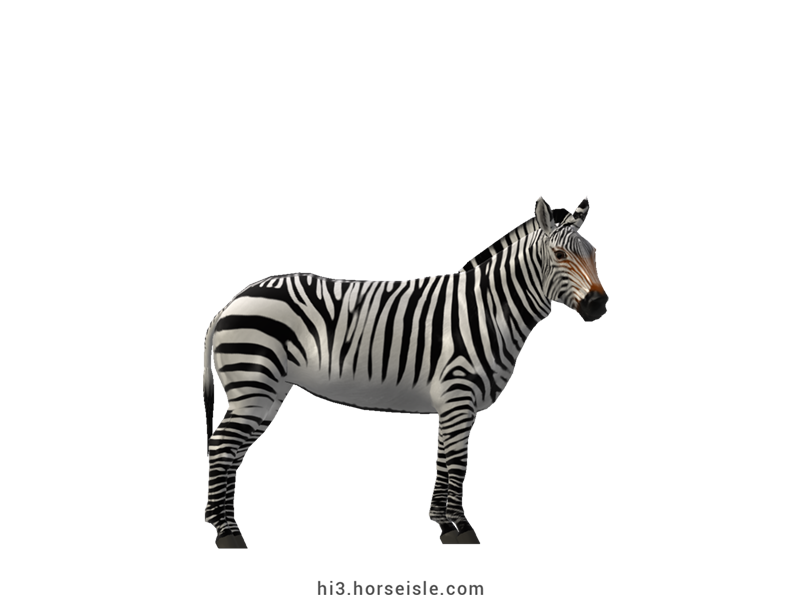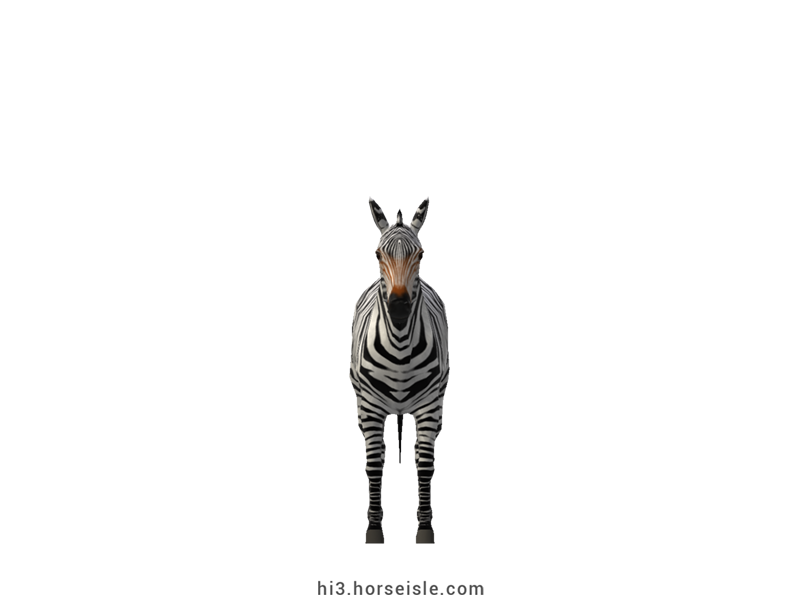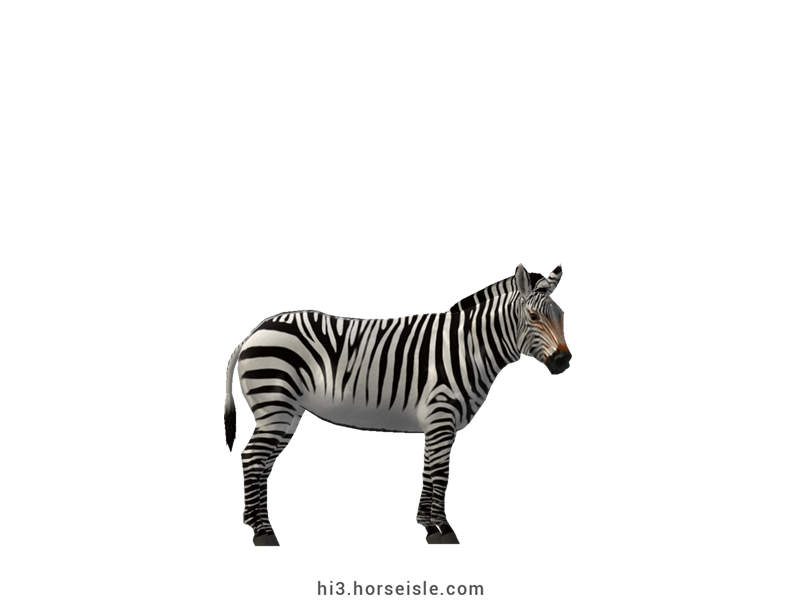Our Massive Real World Equine Reference!
[ INDEX ] Equine Type: Zebra Breed: Mountain Zebra [ PREV ] [ NEXT ]
As its name suggests, the Mountain zebra is unique in the world of zebras because of its ability to climb and live in the mountains. While Plains and Grevy zebras roam in flat savannas and grasslands, respectively, the Mountain zebra roams on mountains that can be as high as 2,000 meters above the sea. In addition, Mountain zebras of the Hartmann's subspecies also roam in nearby salt flats.
The Mountain zebra is not only unique for its habitat and climbing ability, but also for its appearance.
Coat Pattern:
The coat of Mountain zebras is unique, especially when it comes to its dorsal line. Unlike Plains and Grevy zebras who have a dorsal line from the withers to the tail, Mountain zebras have a "half-dorsal" line; it starts from the middle of the back, and extends all the way to the tail. On the ramp, shorter stripes branch out of the dorsal line, thus creating a pattern of a gridiron.
The stripes on the sides of the barrel are vertical, and end slightly above the height of the stifle. The abdomen is completely white except for a thick, dark, single line that runs along the stomach.
The stripes on the thigh are horizontal, and are the thickest stripes of the pattern. The legs are also striped, and the coronet bands are black.
The head has between 9 to 16 stripes between the eyes. These stripes are thinner compared to the stripes in Grevy and Plains zebras. The stripes on the center and sides of the head connect to the muzzle.
The front of the head has a distinct brown coloration instead of black, although the muzzle is black.
Although more can be mentioned regarding the stripe pattern of Mountain zebras, the abovementioned is more than enough in order to allow successful identification of Mountain zebras.
The Mountain Zebra Today:
Mountain zebras roam the mountainous terrains in South Africa, western Namibia, and south-west Angola. Mares and foals live in harems; these are small groups of around five mares that belong to a single stallion. Single males live in small groups as well, and individual members of such groups will try to convince young mares to leave their current harem and join them instead.
There are two subspecies of Mountain zebra: the Cape Mountain zebra, which roams only in southern South Africa, and Hartmann's Mountain zebra, which roams in both South Africa and Namibia. Both of these subspecies are found in Horse Isle.
Today, because of an increasing loss of habitat, the Mountain zebra is a vulnerable species.
Conformation:
Mountain zebras have a conformation that is more similar to that of Plains zebras than to that of Grevy zebras. However, there are two major differences between the two. First, the ears of Mountain zebras are larger than these of Plains zebras (although smaller than these of Grevy zebras.) Second, Mountain zebras have a "dewlap," which is a unique skin flap under their neck.
In addition, the hooves of Mountain zebras are harder and more angular than the hooves of Grevy and Plains zebras. This protects the hooves from excessive wearing out when traversing through the mountains, and allow a better grip of the ground.
Performance metrics:
The following are the: range, average, (SD), and MOE of performance metrics of ordered Mountain Zebras in Horse Isle (not bred ones). In rare cases,
Speed: 13.5-15.7, 14.5 (0.5), 0.11.
Sprint: 38-57, 46 (5), 0.89.
Accel: 0.87-1.06, 0.97 (0.05), 0.01.
Decel: 0.83-0.98, 0.91 (0.04), 0.01.
Jump: 4.92-5.21, 5.07 (0.06), 0.01.
Pull: 1.14-2.13, 1.58 (0.23), 0.05.
Turning: 46.59-57.20, 51.39 (2.26), 0.44.
Reverse: 2.2-2.8, 2.5 (0.1), 0.02.
Stamina: 43.34-52.26, 47.64 (1.77), 0.35.
Reaction: 0.61-0.75, 0.69 (0.03), 0.01.
Height:
Mountain zebras stand between 11.1hh and 14.3hh.
[ INDEX ] [ PREV ] [ NEXT ]









